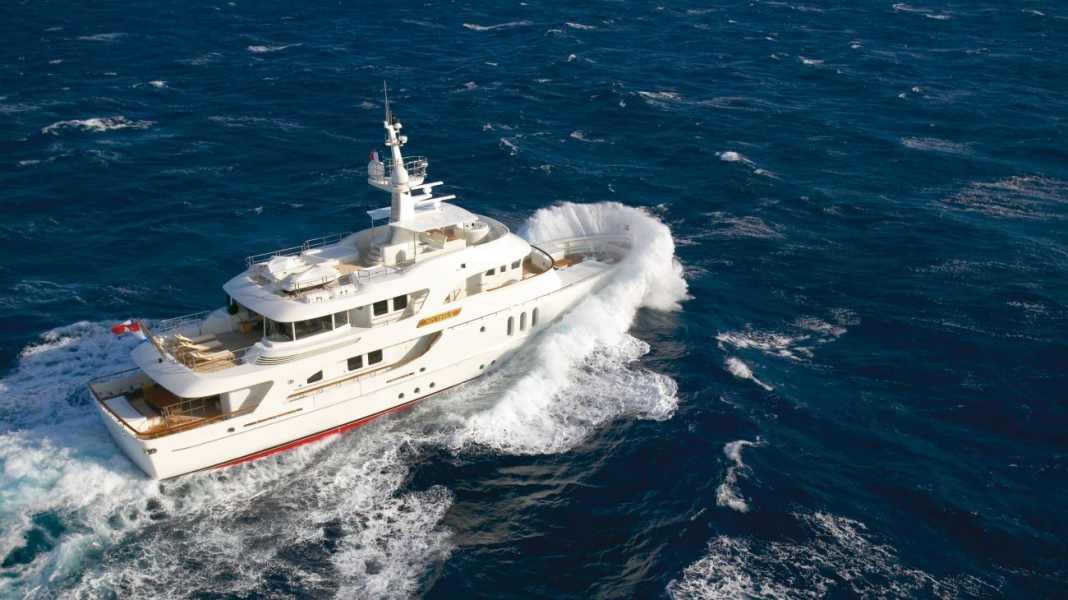
Take a break for one, two or three years. And then take your own motorboat to the Channel Islands, the Cape Verde Islands, perhaps Iceland or even across the pond to the Caribbean? And without sails, but at a steady speed and independent of the wind. Is that really possible? Every year, many sailing yachts cross the Atlantic. And it goes without saying that sailing boats of all sizes are travelling on every sea.
On the other hand, if you explain to the average pleasure boater that you want to cross the Atlantic in your own ten to fifteen metre class motorboat, you are usually thought to be crazy.
Travelling across open seas and even oceans by motorboat has a long tradition: as early as 1975, Robert P. Beebe brought a series of Concepts for seagoing motorboats in his classic book "Voyaging Under Power". And he had already realised his ideas in his own boat, the "Passagemaker", in 1963, covering 50,000 nautical miles across all the world's oceans in five years.
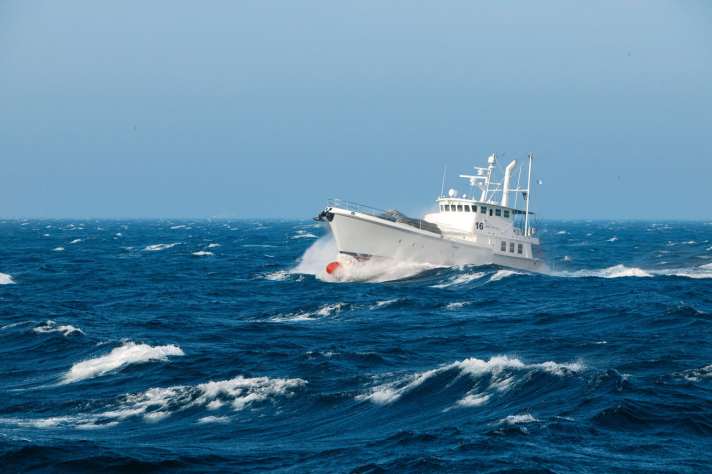
In the meantime the term "Passagemaker" In the USA, there is a boat class of its own: sea-going motorboats that can not only survive any weather on the open sea, but also have the range to cross oceans. Prominent examples of this are yachts from Nordhavn or Kadey Krogen.
For example, a Nordhavn 40, barely more than twelve metres long, circumnavigated the world once between 2001 and 2002, covering 24,000 nautical miles.
In Europe, however, the idea of travelling the Baltic Sea, North Sea or even the Mediterranean in a motorboat between ten and fifteen metres in size is not a popular idea. Atlantic or Pacific travelling is almost always met with incomprehension. But why should such journeys only be possible by sailing boat? There are two main reasons. Firstly, the range: The sailboat consumes no fuel and can therefore theoretically travel as far as it likes.
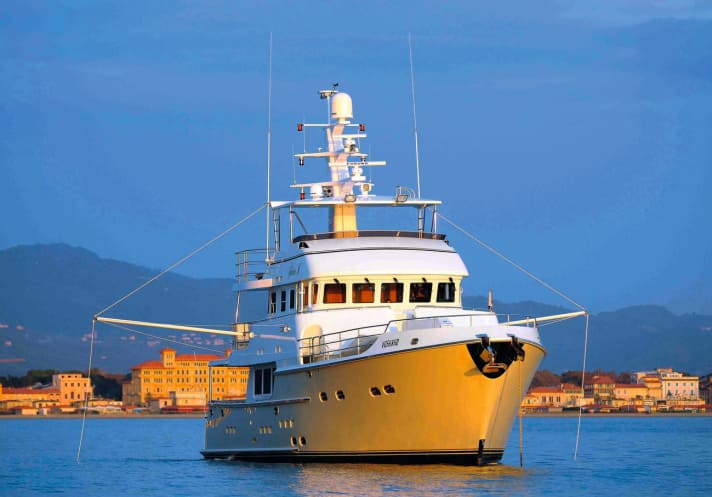
Secondly, the behaviour in rough seas: A sail stabilises the boat in most winds so that it still pitches but rolls very little - which makes the journey much more pleasant. Motorboats, on the other hand, are generally thought to consume so much fuel that a normal range is measured in hundreds of nautical miles, which is certainly only sufficient for travelling close to the coast.
And the swell! Motorboats roll so violently depending on the wavethat the crew is inevitably seasick or at least so stressed that it is hardly possible to steer the boat safely.
And yet: both points are surprisingly easy to remedy.
A seagoing motorboat consumes little fuel
Firstly, fuel consumption. This depends on two factors: the type of boat, i.e. glider, semi-glider or displacer, and the speed at which it is travelling. To bring a glider or semi-glider up to speed, the following is required A lot of energy necessary. This is why they quickly consume 50 litres per hour or more at over 20 knots (i.e. over 2.5 litres per nautical mile).
A common route across the Great Pond is around 2500 nautical miles. At 20 knots, you would reach your destination in just over five days, but would burn around 6250 litres of fuel. That's over six tonnes of additional weight. And how is a glider supposed to carry so much fuel?
A displacement hull, on the other hand, can very easily achieve a consumption of one litre per nautical mile or less. And a few tonnes more weight is much easier for a displacement hull to carry than for a glider or semi-glider.
Then, with a displacer, the Cruising speed is crucial. For example, a 12-metre boat travelling at 5 knots will burn 0.8 litres per nautical mile or even less, while the same boat will consume around 1.2 litres or more at 7 knots. A good compromise is then around 6 knots with 1 litre consumption per nautical mile. For the distance mentioned above, 2500 litres of fuel are then required, the weight of which - 2.5 tonnes plus reserve - can easily be carried by the displacement hull.
No more rocking the boat
Stably built displacement motorboats are generally no less seaworthy than sailboats. For example, Harald Paul and his Gypsy Life (Smelne) can also be used in strong winds in northern Atlantic on the road. But that is only Something for the very tough. Because when the waves are several metres high, a boat like this rolls so violently that the crew on board is quickly completely exhausted and barely able to steer the boat.
It was therefore clear to the aforementioned pioneer Robert P. Beebe that a seagoing motorboat absolutely had to be stabilised against swell and especially against rolling. He learnt a simple but very effective system from American fishermen: the flopper stopper (see also BOOTE 7/15).
This involves towing constructions (the flopperstoppers) on long outriggers in the water, which sink quickly but are very difficult to pull up again. If the boat wants to roll because of a wave, one of these flopperstoppers of the resistance to the rolling movement.
This system works so simply and well that it is still widely used today. For example, on the MY Lena during a cruise through the Mediterranean Sea, to the Cape Verde Islands and from there via the Atlantic to the Caribbeanor the MY Kaniva from Germany via the North Sea to Scotland, then to Ireland and across the Atlantic to Newfoundland and back.
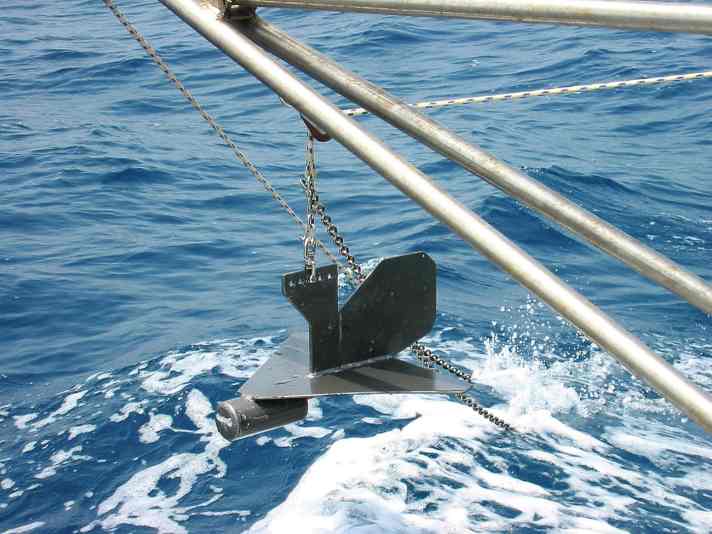
If flopper stoppers are too cumbersome for you, you can Stabilisers in the form of active fins as we described in BOOTE 7/15. This involves installing fins on the hull that are moved by a hydraulic system. One Electronics in the boat constantly checks in which direction the boat wants to roll and steers the fins so that they generate a corresponding counterforce. Result: Rolling is reduced by up to 90 %.
But only if the boat is travelling at a few knots. This is because the fins can only generate a counterforce if they are are flowed against. Flopper stoppers on outriggers, on the other hand, also work when the boat is stationary - at anchor, for example. Flopper stoppers are also used without any electronics or hydraulics out. They are therefore relatively quick and inexpensive to install and there is little that can cause problems.
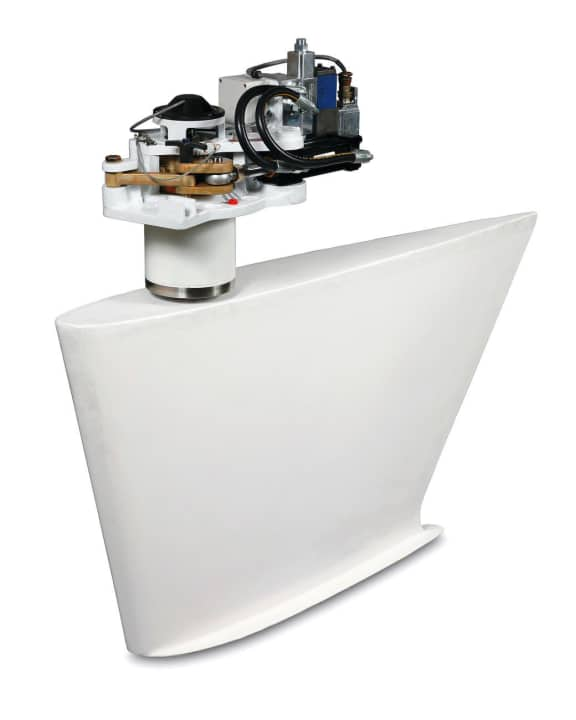
Fins are technically more complex, but are ready for use at the touch of a button and can adapt well to the prevailing sea conditions. So jach principle has its advantages and disadvantages, In any case, the unpleasant movements of the boat in rough seas can be reduced so effectively that passages lasting days or even weeks are no longer agonising, but comfortable and pleasant.
The advantages of the motorboat
After fuel consumption and swell No obstacles The advantages of the motorboat, especially on long passages across the open sea, can also be enumerated:
- Great independence from wind and weather
- Constant travelling speed and therefore predictable arrival times
- There is always enough energy available for life on board
The wind is particularly important here. On a sailing boat, a lull means a standstill and quickly wears on the nerves. And when the wind blows, it often blows from the wrong direction, meaning that the course has to be changed and a passage can quickly take a few days longer.
A motorboat, on the other hand, can take a direct course. Days with little wind are not disruptive, but promise a calm ride and are therefore generally very welcome.
Even under engine power, the cruising speed is not always the same: Wind, swell and current can make the boat faster or slower. However, the deviations are usually comparatively small and the boat moves reliably towards its destination. Of course, a long passage thus loses the character of being fully dependent on the elements to be. Everyone can decide for themselves whether this is good or bad.
In any case, it is very practical that the batteries do not have to be recharged by more or less reliable wind power or solar cells: The machine is running anyway and produces electricity in abundance. Stored in the batteries.
One or two machines?
One thing is clear: if the engine is the only propulsion system to fail in the middle of a large sea, possibly even in strong winds, this can lead to unpleasant situations and even distress at sea. So does a sea-going motorboat necessarily have to be equipped with two engines?
Many ocean crossers prove the opposite. The Lena, the Kaniva or the Gypsy Life - they all have just one diesel engine.
And with good reason: very little can bring a well-maintained marine diesel engine to a standstill as long as clean diesel and sufficient cooling and oil are available.
For the clean diesel there is Double filter systems and day tanks. And the other problems that can occur en route can almost always be solved with suitable spare parts and a little manual dexterity. Alternatively, motorboats for those on a higher budget often have a so-called "Coming home" machineA small, second diesel engine with its own propeller, which keeps the boat manoeuvrable in an emergency and allows it to sail at low speed. Ultimately, however, this machine almost always stands around unused and still needs a lot of care and maintenance to ensure that it really works if the worst comes to the worst.
Everyone has to decide for themselves and their wallet whether and when this makes sense. The mentioned Practical examples show that it can be done without.
Get anywhere with your own motorboat
But there are still a few Important features that seagoing motorboats should have. A machine room with plenty of room to manoeuvre, for example, enables regular checks to be carried out while on the move. A reliable Autopilot should be on board, because nobody wants to spend days steering the boat themselves. However, the decisive factors are Low fuel consumption and stabilisation in rough seas.
Then, of course, travelling across a sea or even an ocean is still real seafaring with all its Challenges to nautical and navigational skills. But it is not only possible with a suitable motorboat, it can even be very pleasant.
This means that longing destinations such as the Channel Islands, Iceland or the Caribbean can also be reached by motor cruiser - comfortably and safely.

